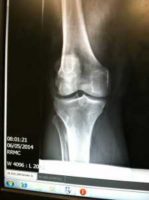Author Interviews, Pain Research / 16.07.2018
Acupuncture For Pain in Breast Cancer Patients on Aromatase Inhibitors
MedicalResearch.com Interview with:
Dawn Hershman, MD, MS, FASCO
Professor of Medicine and Epidemiology
Leader, Breast Cancer Program
Herbert Irving Comprehensive Cancer Center
Columbia University Medical Center
MedicalResearch.com: What is the background for this study? What are the main findings?
Response: Aromatase inhibitors are effective in reducing the risk of recurrence in hormone sensitive breast cancer, however they commonly cause joint pain and stiffness that can lead to early discontinuation of treatment. We know that women who stop early do not get the same benefits as those who continue for the full duration.
Acupuncture has been shown to improve a variety of pain syndromes. We conducted a large multicenter trial among women with joint pain on aromatase inhibitors and randomized patients to true acupuncture, sham acupuncture and a waitlist control arm.
We found that acupuncture resulted in more pain reduction than the other 2 control groups. Measuring pain can be challenging in clinical trials. We now know that a meaningful reduction for a patient is 2 points on a 10 point scale. We found that nearly 60 percent of women in the true acupuncture group experienced at least a 2-point reduction in pain, versus 33 percent of the sham acupuncture group and 31 percent of the controls. These results where highly statistically significant. (more…)










